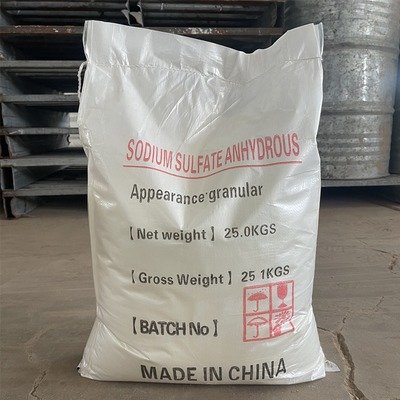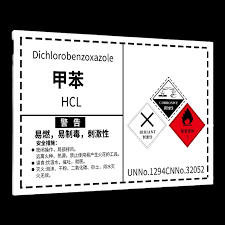what is sodium bisulfite
Sodium bisulfite, also known as sodium hydrogen sulfite, is a versatile chemical compound that plays a crucial role in various industries. This colourless crystalline solid, with the chemical formula NaHSO3, is derived from the reaction of sulfurous acid and sodium hydroxide. Its unique properties make it an essential ingredient in numerous applications, from food preservation to water treatment.
Sodium bisulfite is a salt of sulfurous acid, also referred to as the sulfurous acid salt. It is a widely used preservative and antioxidant, valued for its ability to inhibit the growth of bacteria, yeasts, and moulds. This compound is particularly notable for its role in maintaining the freshness and colour of various food and beverage products, ensuring their quality and extending their shelf life.
Beyond its applications in the food industry, sodium bisulfite finds use in the textile, paper, and mining industries, where it serves as a reducing agent, bleaching agent, and water treatment chemical. Its versatility and effectiveness have made it an indispensable part of many industrial processes and products we encounter daily.
- Sodium bisulfite is a versatile chemical compound with a wide range of applications.
- It is a salt of sulfurous acid, also known as sodium hydrogen sulfite.
- Sodium bisulfite is an effective preservative and antioxidant, widely used in the food and beverage industry.
- Its chemical properties make it valuable in various industrial processes, including textile, paper, and mining.
- Understanding the nature and applications of sodium bisulfite is crucial for industries that rely on its unique properties.
Understanding Sodium Bisulfite and Its Chemical Properties
Sodium bisulfite, also known as sodium hydrogen sulphite or sodium pyrosulfite, is a versatile chemical compound with a wide range of applications. As a food preservative (E222), it plays a crucial role in maintaining the freshness and quality of various food and beverage products. Let’s delve deeper into the intriguing world of sodium bisulfite and explore its chemical structure, physical properties, and diverse forms.

Chemical Structure and Composition of NaHSO3
Sodium bisulfite is a salt composed of sodium (Na+) and the bisulfite ion (HSO3-). Its chemical formula is NaHSO3, and it is a stable and odourless crystalline solid at room temperature. The bisulfite ion, which is the core of this compound, is responsible for its unique preservative and antioxidant properties, making it an essential ingredient in many food preservative and bisulfite preservative applications.
Physical Properties and Characteristics
- Appearance: Colourless crystals or white powder
- Solubility: Soluble in water and alcohol
- Melting Point: Approximately 150°C
- Boiling Point: Decomposes before boiling
- Density: 2.53 g/cm³
Different Forms and Preparations
Sodium bisulfite is available in various forms, including sodium pyrosulfite, which is a related compound. These different preparations can be tailored to specific applications, ensuring the optimal performance and effectiveness of the food preservative E222. The versatility of sodium bisulfite allows it to be incorporated into a wide range of products, from food and beverages to pharmaceuticals and industrial applications.
FormDescriptionSodium BisulfiteThe most common form, available as crystals or powderSodium PyrosulfiteA related compound with a slightly different chemical structure, often used in similar applicationsSodium MetabisulfiteAnother form of sodium sulfite, commonly used as a bisulfite preservative
Common Applications of Sodium Bisulfite in Industry
Sodium bisulfite, a versatile chemical compound, finds a wide range of applications across various industries. As an inorganic disinfectant, it plays a crucial role in water treatment, helping to eliminate harmful microorganisms and contaminants. Its dechlorinating properties make it an essential component in the process of removing chlorine from water, ensuring a safer and more environmentally friendly water supply.
Moreover, sodium bisulfite’s deoxygenating capabilities make it a valuable asset in the food preservation industry. By eliminating oxygen, it helps to prevent the growth of spoilage bacteria and extend the shelf life of food products, such as wine, dried fruits, and vegetables. This preservative function is particularly important in maintaining the quality and freshness of these consumable goods.
IndustryApplicationBenefitWater TreatmentInorganic DisinfectantEliminates Harmful Microorganisms and ContaminantsFood PreservationDeoxygenating AgentPrevents Spoilage and Extends Shelf LifeTextile ProcessingReducing AgentRemoves Unwanted Dyes and Chemicals
Beyond these primary uses, sodium bisulfite finds additional applications in the textile industry, where it functions as a reducing agent to remove unwanted dyes and chemicals from fabrics. Its versatility and effectiveness make it an indispensable component in a variety of industrial processes, contributing to the efficiency and safety of numerous sectors.
Safety Considerations and Environmental Impact of Sodium Hydrogen Sulfite
As a versatile chemical compound, it’s crucial to understand the proper handling and storage guidelines for sodium hydrogen sulfite, also known as sodium bisulfite or NaHSO3. This salt of sulfurous acid can pose potential health and environmental risks if not managed responsibly. We’ll explore the key safety considerations and environmental impact of this widely used substance.
Proper Handling and Storage Guidelines
When working with sodium bisulfite. it’s essential to wear appropriate personal protective equipment. such as goggles, gloves, and a respiratory mask. Ensure adequate ventilation in the work area and avoid generating dust or mists, which can be easily inhaled. Store the chemical in a cool, dry place, away from incompatible materials like strong oxidising agents. Keep containers tightly sealed to prevent exposure and follow the manufacturer’s instructions for safe handling and storage.
Environmental Concerns and Regulations
The release of sodium bisulfite into the environment can have adverse effects on aquatic life and water quality. It’s important to dispose of this chemical in accordance with local and national regulations, which often require proper treatment or neutralisation before discharge.
Emergency Response Procedures
In the event of a spill or accidental exposure, it’s crucial to follow established emergency response protocols. Isolate the affected area, contain the spill, and avoid direct contact with the chemical. Provide immediate first aid, such as flushing eyes or skin with water, and seek medical attention if necessary. Consult the safety data sheet for detailed information on appropriate cleanup. decontamination methods. notify the relevant authorities if the spill poses a significant environmental threat.
Contact us:https://www.yuhanchemi.com/contact






